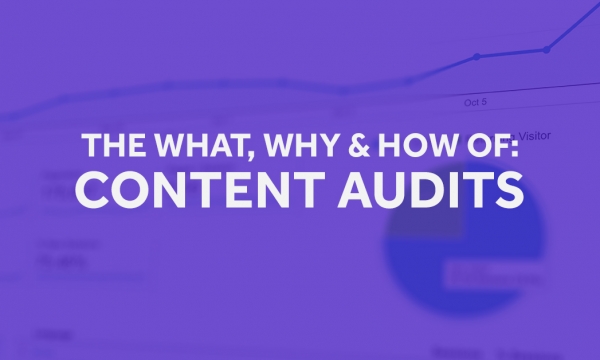As featured by

Content marketing is the topic that is on everyone’s lips. Just like word of mouth marketing and those old-fashioned leaflet drops before it, content marketing is another way to get people talking about your brand and, if executed correctly, the results surpass almost any other marketing channel. When audiences react positively to your brand, they’re directly influenced by to talk about your brand, link to your brand and, ultimately, buy from your brand.
But how do you actually go about creating that killer content? In many cases, there is a huge amount of guesswork involved in trying to determine exactly what your audiences will find useful, entertaining and engaging but the good news is that, with the right insight and research, you can eliminate those hunches and assumptions.
The five steps to content marketing success
Like many marketers looking to plan their content marketing strategy, my approach follows a clear process to determine what content will represent my brand. This five step plan consists of:
Assessment of brand values
“Who are we?”, “What makes us different?” “What do we want to be known for?” You need the answers to these questions before you can even start to consider how you’re going to create content that reflects the personality of your brand and, more importantly, your audience.
Determine channel objectives
What does success look like to you? What is the purpose of your content? Whether it is an increase in page views, more traffic or a more engaged audience, your content must have a reason to exist.
Develop content concepts
Coming up with the right concept is vital to the success of your campaign and typically, a successful concept will have at least one of these three properties:
- Always useful and something that people need. Whether it is a guide, an advisory piece or step-by-step instructions, useful content keeps people interested in you.
- Brilliant, right now. From royal baby content through to Mini following the Horsemeat Scandal, content that is brilliant ‘right now’ can be created literally ‘right now’. If you’re agile enough to pull it off, it can be a great way of getting people to talk about you.
- Big content that gets people talking about you, such as the Maximuscle Protein Project.
Check your ideas
Make sure that whatever your idea is, it is on brand, relevant and feasible.
Create that content
Make your content and then, most importantly, measure its effectiveness.
Following those five steps will, in most cases, get you on the right path to content success but occasionally, good content misses the mark. That doesn’t mean that the content is badly done or badly used but instead, it could mean that you have missed out a vital piece of analysis to understand just who your audience is and what your audience likes.
The right information can transform your Content Marketing
There are a number of tools that can shed light on this very mystery, including Google Analytics and GlobalWebIndex. Using these tools, we can eliminate the guesswork and work out what our target audiences actually want. How do we know this? Because people say that they want it.
Take the following example for a hypothetical supermarket brand (click to enlarge):
The key thing to remember here is that in answering these questions, the survey group had to agree to the question being asked in the first place, which means that we are dealing with clear, honest answers.
From this data, we can see the different types of content that different demographics want from a very specific type of brand. For example:
- 18-24 year olds prefer video content.
- Those who are 50+ are least likely to engage with mobile apps.
- The 30-40 age group value brand-focused content.
- All age groups want to be inspired.
This data gives us some clear direction on how content marketing strategy should be structured. If, for example, we were tasked with getting more 18-24 year olds through the doors of our hypothetical supermarket, a campaign of inspirational videos would be high on the agenda.
Using GlobalWebIndex provides insight on how our audience wants to interact with our brand, where it wants to interact with us and what content they want. Instead of creating content purely to appease the SEO demands of the business, we’re now in a position to create content that is right for the brand and, more importantly, our audiences.
Finding the Opportunities
Of course, surveying alone will never fully enlighten us on what people want but we can’t ignore the hard facts and data around internet behaviour. Google Analytics allows us to analyse the total number of pages against total number of views. Whilst this doesn’t sound like the most revolutionary approach to market insight, it does highlight some key opportunity areas.
In this example, which looks at the homeware department of our hypothetical supermarket, we can identify a number of opportunities:
- In the decorating category, the percentage of total unique page views is much higher than the percentage of total pages on the website.
- There is potentially too much news content being produced, with this content being the least viewed area of the site. This could also suggest that news content needs to be more visible.
- The amount of content about special offers and furniture is about right.
With this insight, we can start to create content that reflects the online behaviour of our audience. Where there is a clear appetite for certain types of content, the content strategy should reflect this.
For the example we shared, the target audience wanted more video content and they also demanded more content around the decorating category, due to visiting habits. Putting two and two together tells us that compelling video content about decorating should be very much a part of our content marketing strategy.
The only challenging bit is ensuring that the content you create is truly interesting, sharable, exciting or hilarious. For that, there’s no silver bullet; just clever recruitment or a clever agency.




